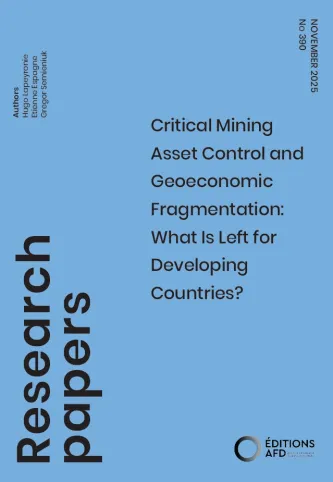Share the page
Critical Mining Asset Control and Geoeconomic Fragmentation: What Is Left for Developing Countries?
Published on

The green economy offers major development potential through climate-focused goods, but access to critical minerals is essential. Developing countries are often limited to supplying raw materials and face the challenges of foreign control by major economies, restricting their development. The indirect risks from concentrated financial ownership of critical minerals and their interaction with the ongoing geoeconomic fragmentation are insufficient understood. This paper investigates three dimensions of control: concentration by (i) geography, (ii) mining company and (iii) equity investor country of origin, and confronts these concentrations with indicators of geoeconomic fragmentation. Using a cross section of production and reserves data from Standard and Poor’s for 2023 from 1,858 active mining assets covering the majority of global supply for 20 minerals we find that concentration in the mining company (direct ownership) and equity ownership dimensions are typically lower than in geography, with important exceptions such as copper, lithium and nickel where the equity ownership concentration is the highest. And unlike geography, only a few countries dominate in direct and equity ownership dimensions of concentration across all minerals. Geoeconomic fragmentation among controlling countries is similarly more pronounced when analyzing direct and equity ownership rather than geographical distribution, suggesting that ignoring these non-geographical control dimensions underestimates the supply risks of critical minerals. Multilateral consultations to establish safe corridors for minimum cross-border flows could help ensure the availability of supplies for all regions in a time of fragmentation.
Useful Information
-
Authors
-
Hugo Lapeyronie, Gregor Semieniuk, Etienne ESPAGNE
-
Edition
-
390
-
Number of pages
-
51
-
ISSN
-
2492 - 2846
-
Collection
-
Research Papers
-
Languages
-
English
